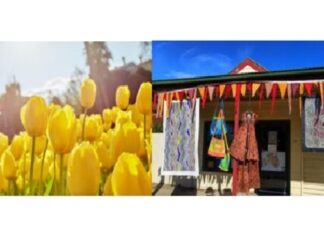Bharatsthali Sarees – the voice of local artisans from different corners of India
Along with the artistry of weavers, the Indian handloom industry demonstrates the richness and diversity of Indian culture. Indian handloom products are different and varied across the states. Weavers with their skillful blending of myths, faiths, symbols, and imagery provide their fabric an appealing dynamism.
Bharatsthali Sarees has become the voice of local artisans from different corners of India by enabling them with cutting-edge technology and providing fair trade. Bharatsthali has a wide range of authentic saree collections that have Silk Mark India label that stands for natural and genuine silk.
Sarees that range from sixyarders to fabrics by the yard are sourced from the corners of Banaras, Bihar, Rajasthan, Kolkata, and entire Southern India for their shining raw fabric with smooth textiles. After establishing its first store in Chandigarh, Bharatsthali set up warehouses in Kanchipuram, Panchkula, Coimbatore, and Thiruvananthapuram. Apart from shipping stores, the company also has an online presence (www.bharatsthali.com)for people to check their harmonious fusion of colors, blended well with elegance.
- What made you launch Bharatsthali?
– The boom handloom industry had before COVID 19 hit India was high up the ladder. 2017, when Bharatsthali.com was formed, was when the industry gained its momentum among the urbans. The husband-Wife duo started this venture to let people live with traditions.2.What were the challenges you faced?
– Pulkit and Sumati, the owners travelled across the villages of Southern and Eastern India to apprehend the elaborateness of weaving, warp and weft, block printing and other important factors on a one-on-one basis.In the times of technology advances, e-commerce and stiff competition, the authenticity of handloom fabrics and art involved in it can only be understood by the one with an eye for originality.
3. What is the USP of the brand?
– Sarees from Bharatsthali silk come with Silk Mark India label, benchmarking of natural and authentic silk and critical evaluation that comes handy when to plan a heritage Banarasi or Kanjivaram for future generations.4. What are your expansion plans?
– Within the first year of starting Bharatsthali, it saw a turnover of more than Rs. 20 lac and doubled the profits by the second year. As of now, it has an online pan India reach and global reach along with a retail store in Chandigarh.
As the current market situation calms down it will be on the cards to open stores in other parts of the country too.5. In the world of all rounder bots, how do you justify spinning wheels and handwoven fabrics?
– Pulkit was a techie before the couple initiated Bharatsthali. New wave when combined with the roots that handloom industry for India is, there’s a magic that gets created.
Changing perceptions of people and encouraging association with new-age generation isn’t an easy task. It has been a turbulent ride, but the change happens gradually.6. What is the current state of handloom industry in india and how did COVID 19 impact?
– Handloom sector had already been hit by demonetisation, which hampered the largely cash-based value chain of small producers that make up this sector. Another blow came with GST, to subsume indirect taxation system but affected the people at the bottom of this small scale industry.
Now with the COVID-19 scenario, globally industries have been hit and many people have lost the jobs. Orders from market are now postponed and a few cancelled.
It’s time now to shift from pro-industry to pro-crafts.
Corporate Comm India (CCI Newswire)































